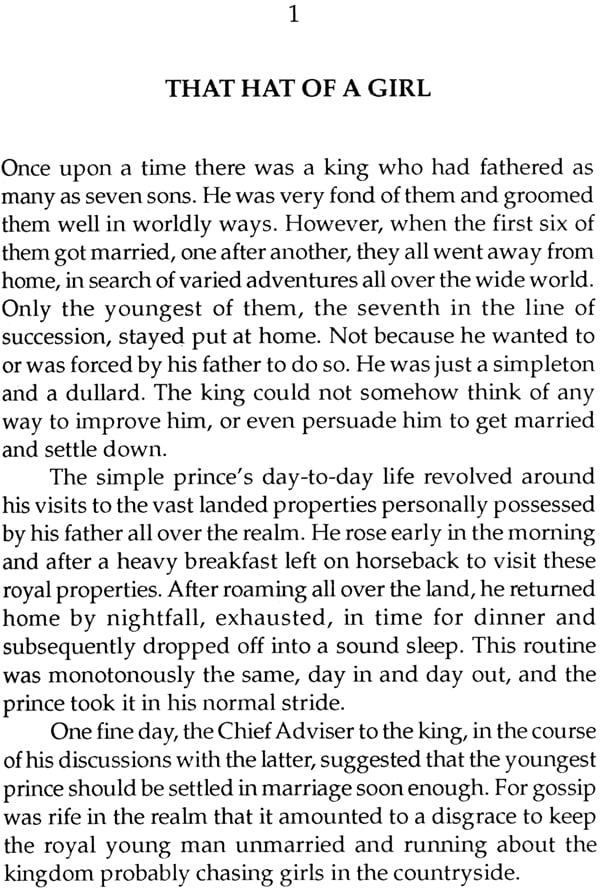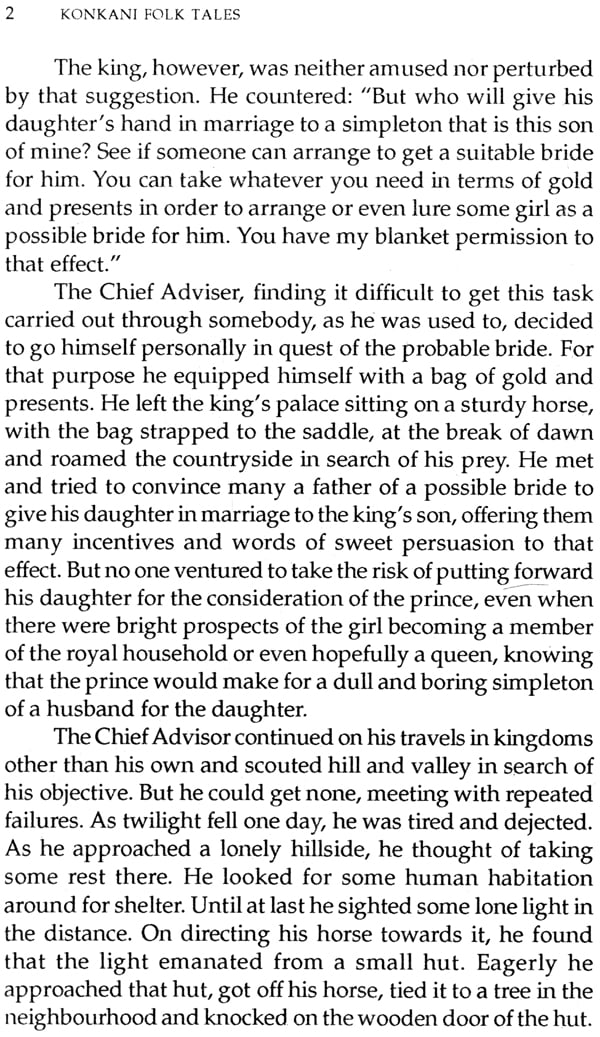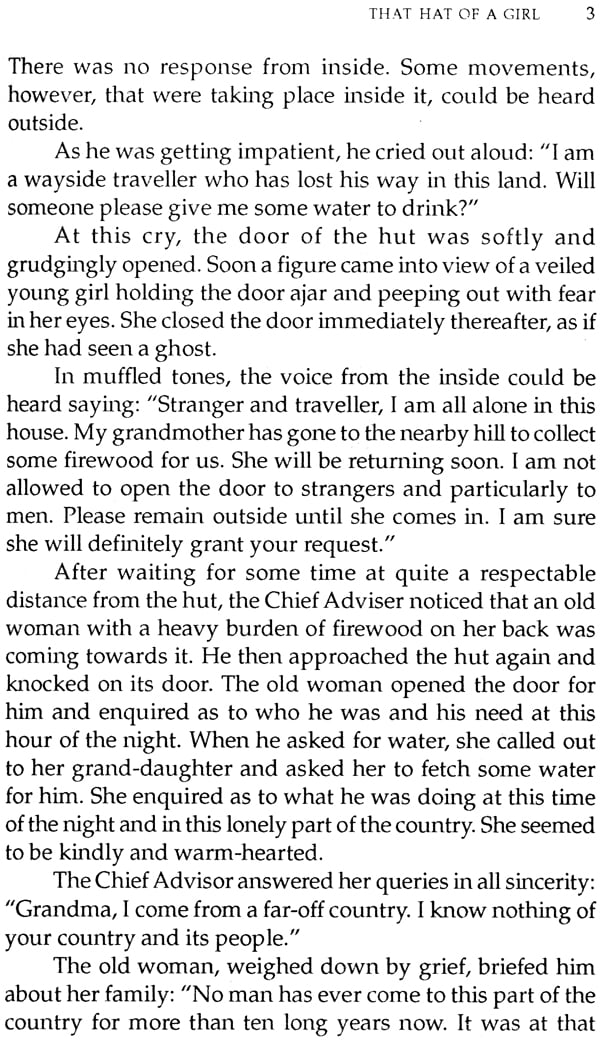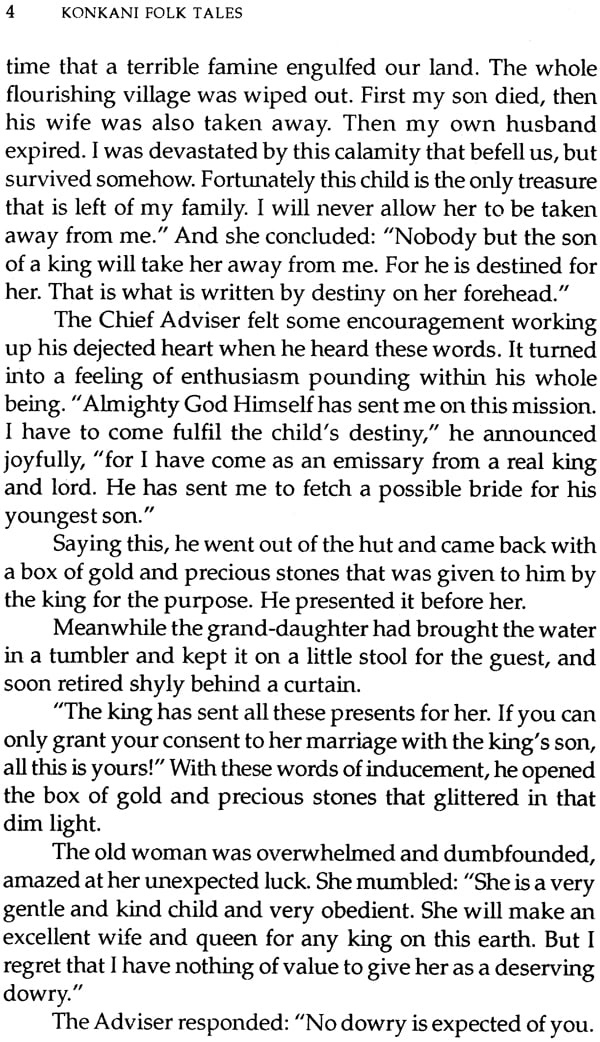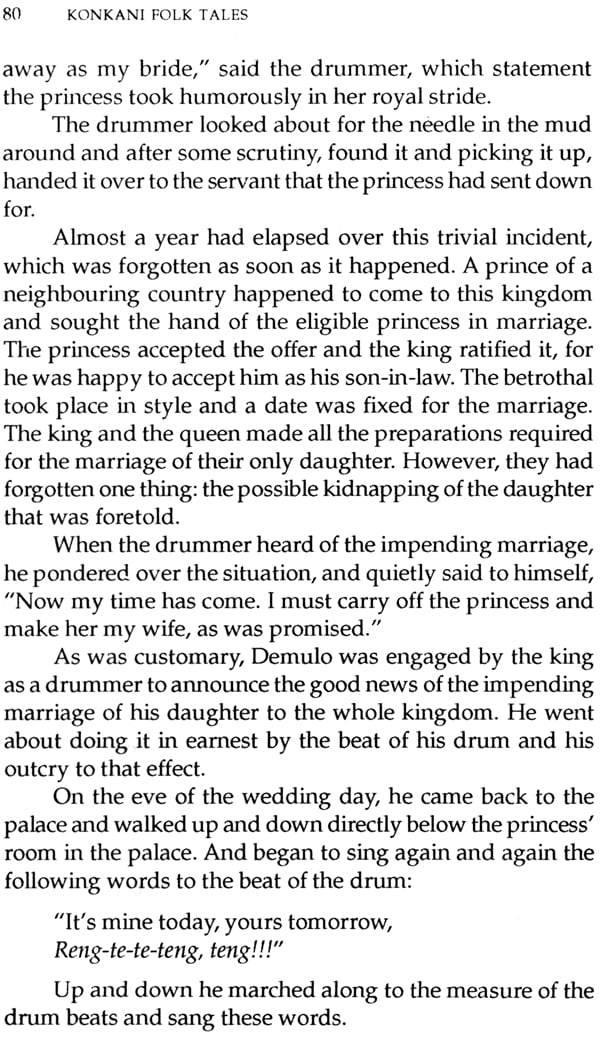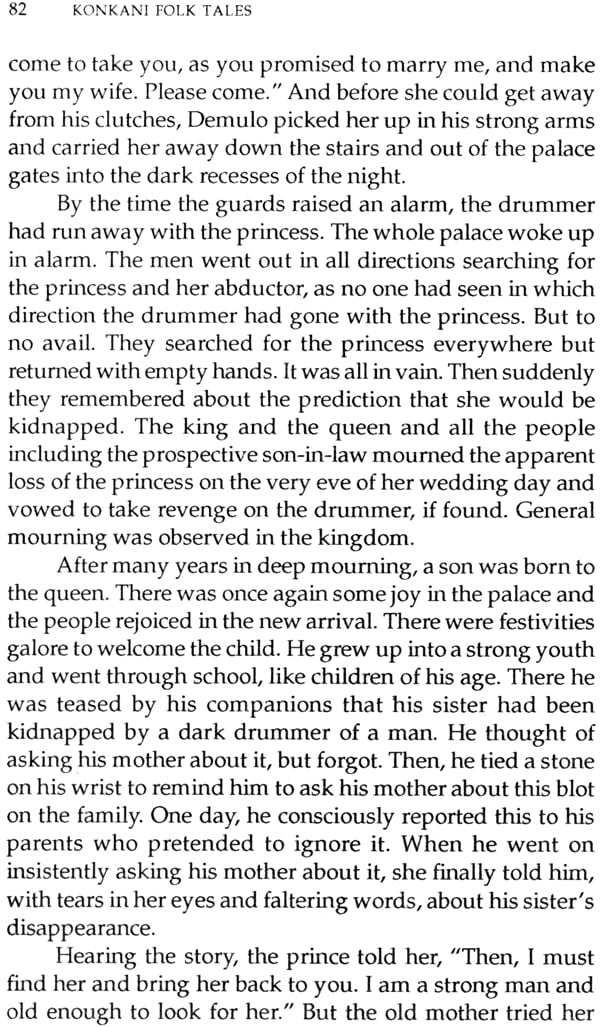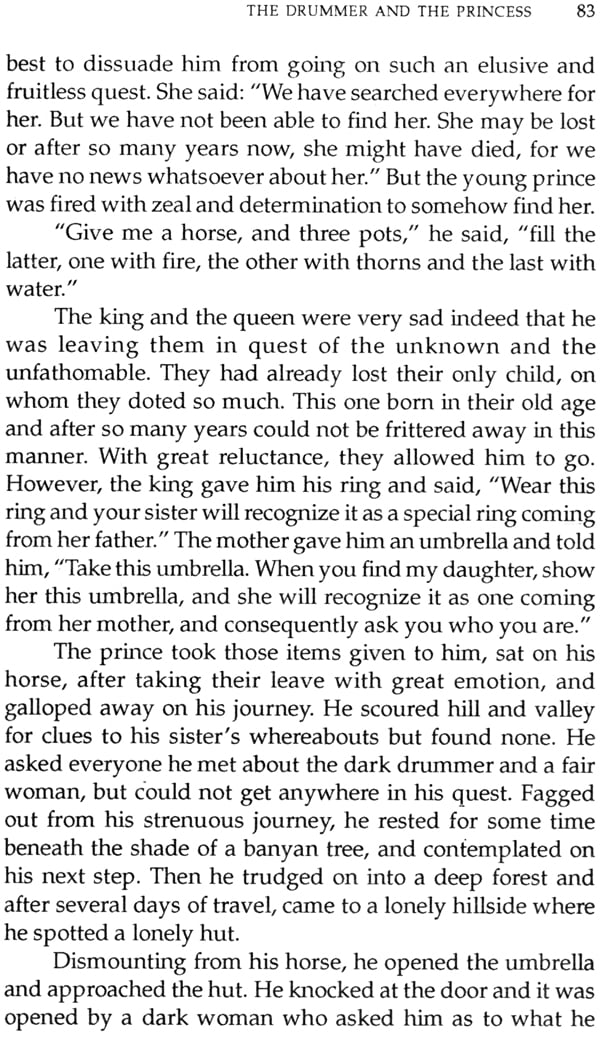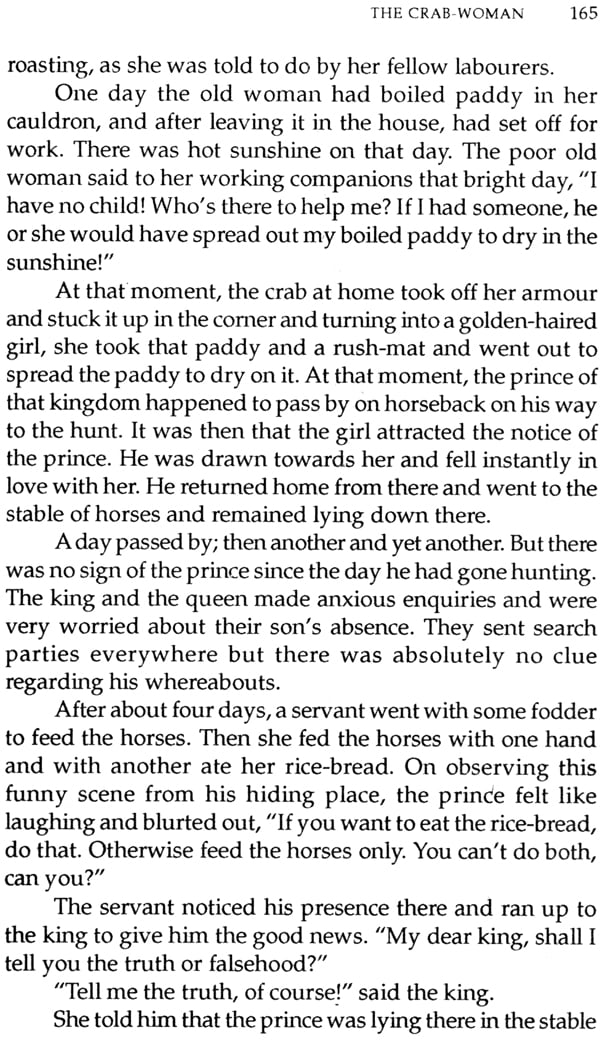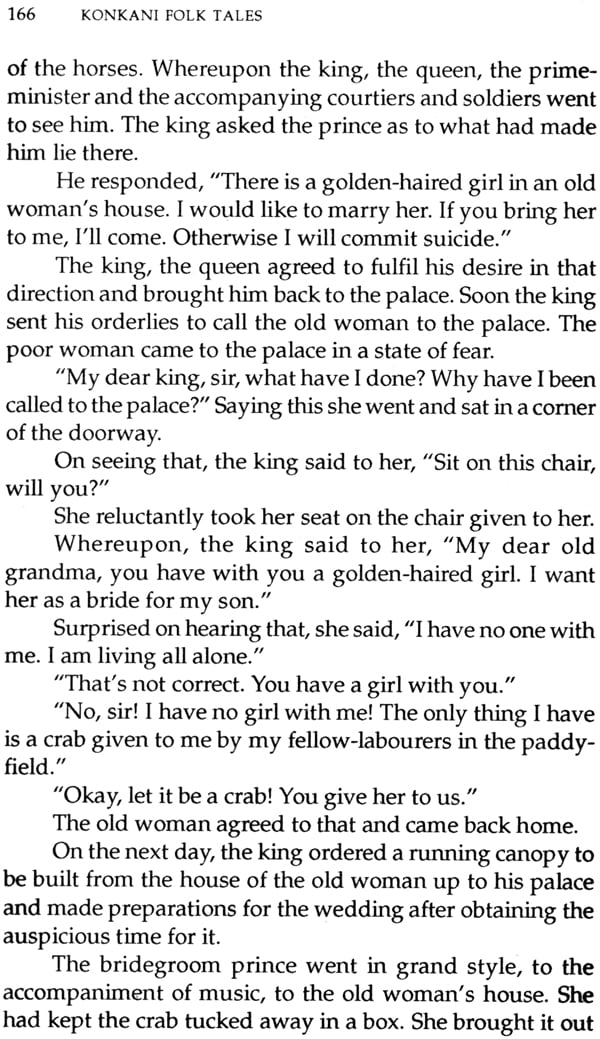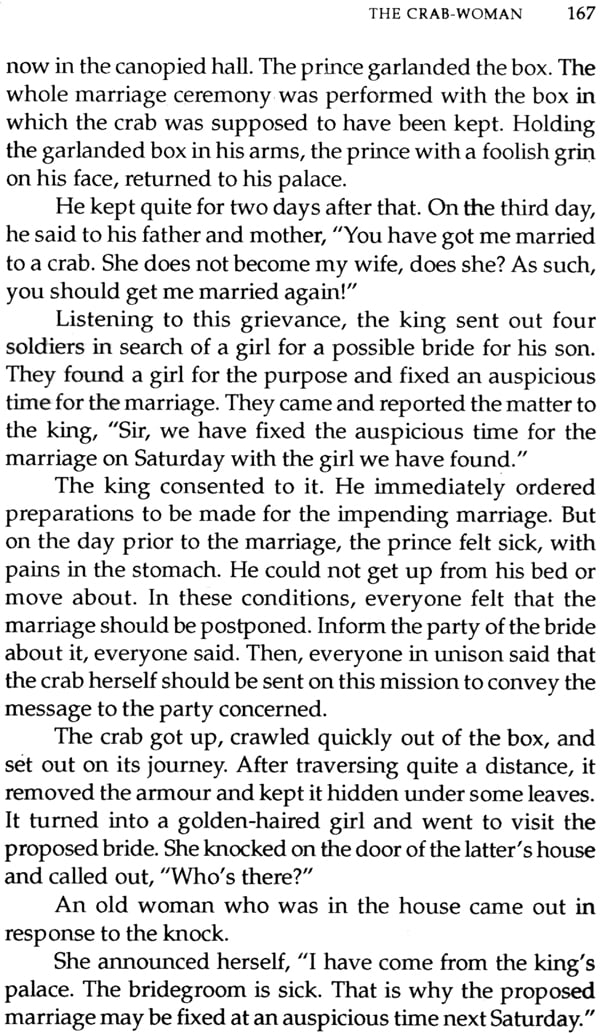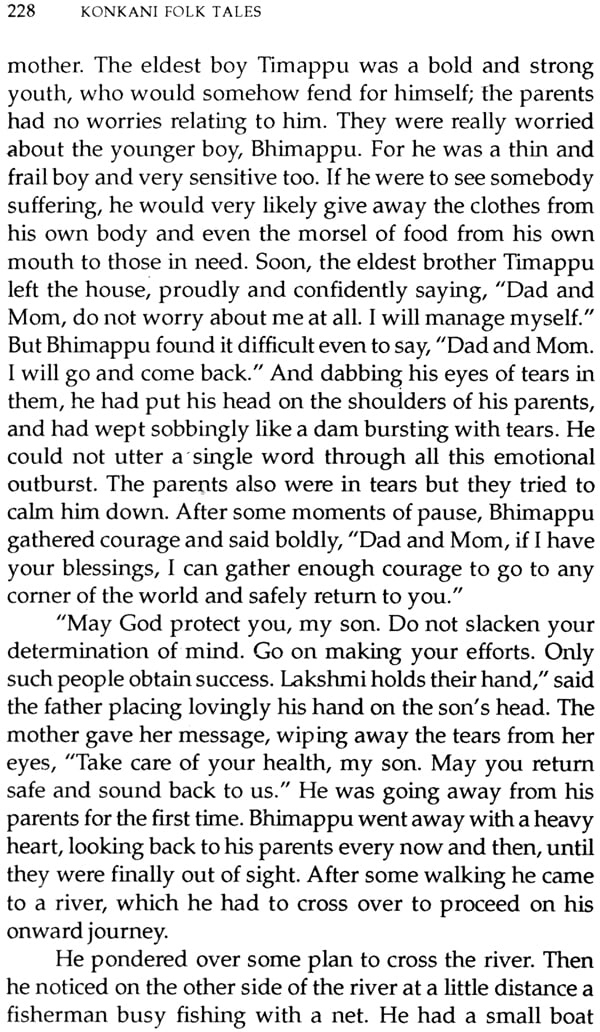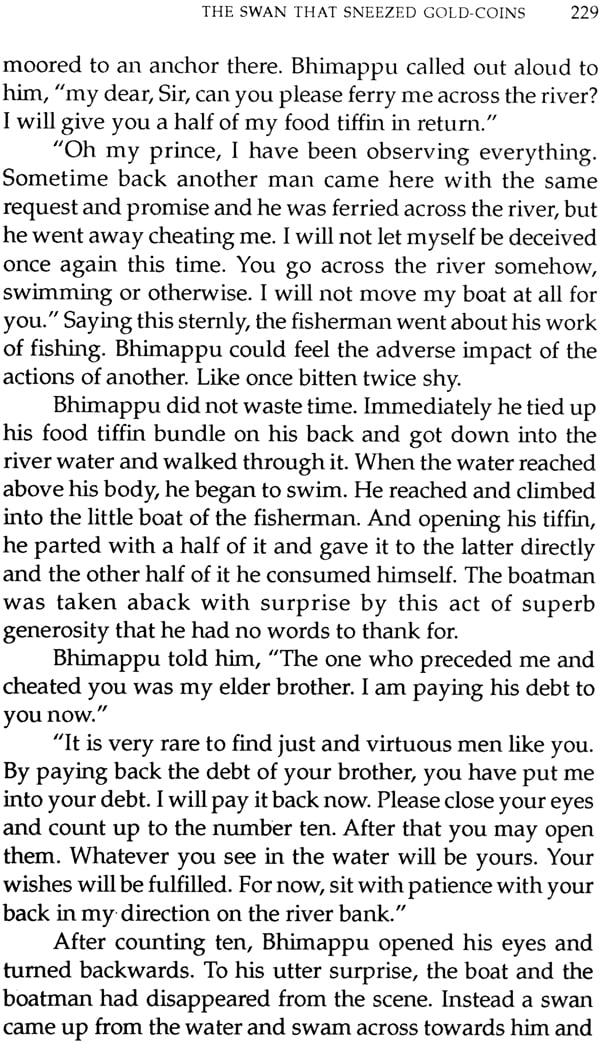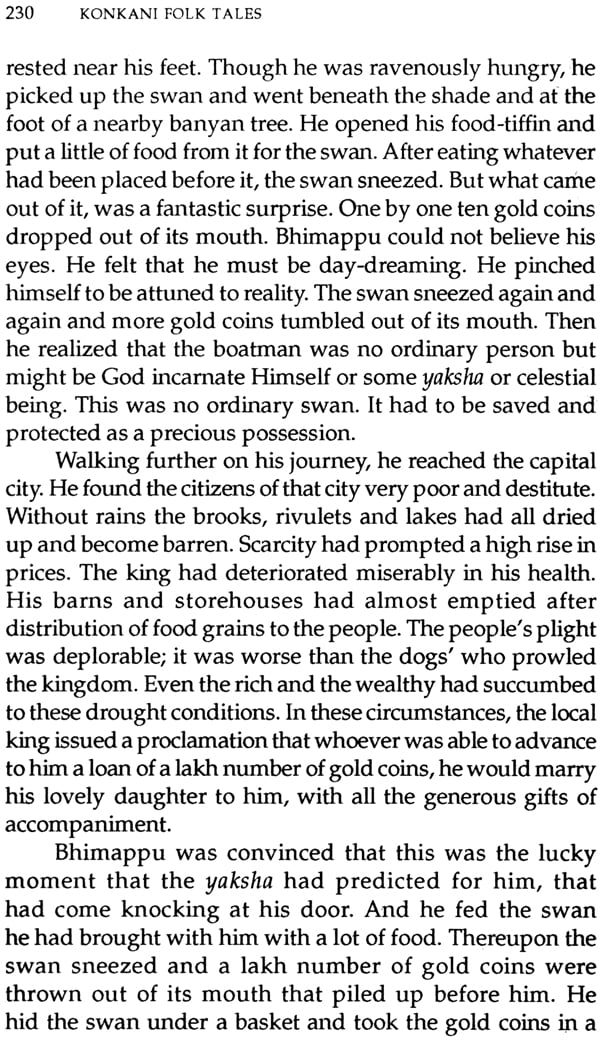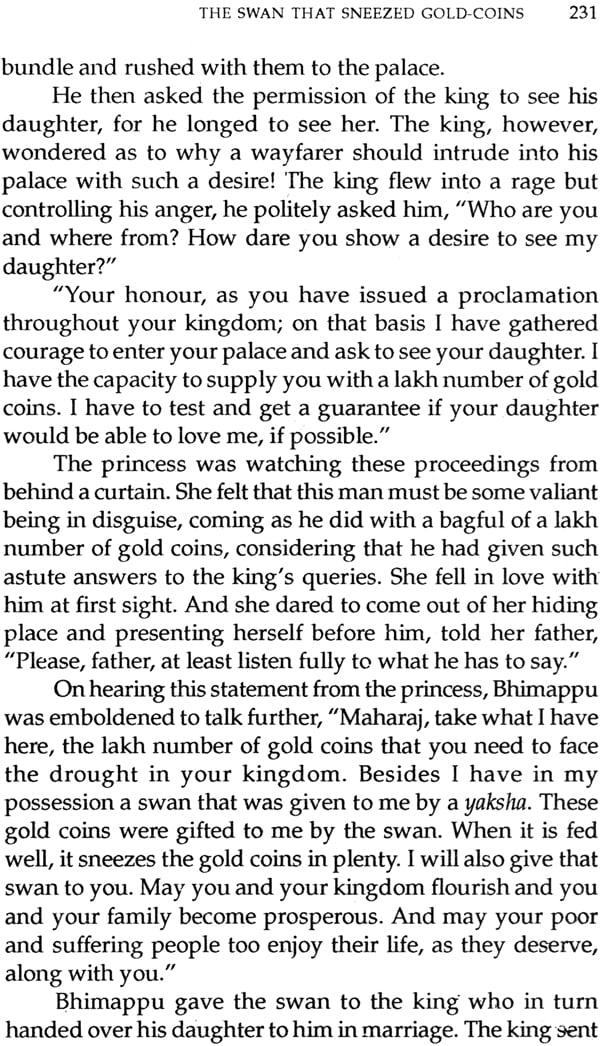
Konkani Folk Tales
Book Specification
| Item Code: | IDK266 |
| Author: | Olivinho J. F. Gomes |
| Publisher: | National Book Trust, India |
| Language: | English |
| Edition: | 2018 |
| ISBN: | 9788123750835 |
| Pages: | 248 |
| Cover: | Paperback |
| Other Details | 8.5" X 5.5" |
| Weight | 320 gm |
Book Description
Introduction
Konkani, geographically-speaking, is the southernmost of all the languages of the Indo-Aryan joint family which is in turn affiliated to the Indo-European grand group of speech. Its homeland that is spread over the western coastal belt of India known from time immemorial as the Konkan, with its heartland in Goa, is wedged in between the Indo-Aryan and the Dravidian families of languages, with mainly Marathi and Kannada as its next-door neighbours to the north, east and south respectively, with spoken Tulu interspersed in its southern portion. Though structurally and linguistically, its grammar, phonology and syntax is essentially Indo-Aryan, Konkani throws its connecting bridges in the matter of morphology or vocabulary to the Dravidian and Proto-Australoid languages in its proximity and bosom, adopting after proper assimilation in tune with its own mellifluous character, some of the latter's resources also in this field, while imparting to the latter its own significant contribution.
Its core lies in the State of Goa in its present form and size. The earlier region of that name was much more extensive than that going beyond its actual boundaries and straddling the present States of Maharashtra and Karnataka. The Konkani language is spoken in the former State in its Sindhudurg district to the north of Goa and in the city of Mumbai by a substantial section of the people, and to the south of it, in the North Kanara or Karwar district Aryan phase, around the tenth century. In this process, Konkani emerged from the Nagar branch of the Apabhramsa, descending from its Western offshoot, while Marathi, to which it has been sought to be linked in a progenital fashion, on political machinations, arose, as a matter of fact, from the Mishra or mixed Prakrit descendant of Apabhramsa through its Dakshinatya/ Southern branch of Prakrit. Their sister language Hindi emerged from the Western branch of Apabhramsa from its specific commonly-inherited characteristics with its Nagar and Paschimi branch sister Indian languages, namely Gujarati and Rajasthani, and Hindi respectively, much more than with its next-door neighbour to the north that is Marathi, from which it is materially different in terms of grammar and vocabulary.
By the tenth century or thereabouts, this blend of a language, displaying a clear Indo-Aryan visage in its basic structure and functional operation, with borrowings and adaptations from other sources, had reared its head as an independent medium of literary expression on its own steam and centered in the Goa region of the Konkan from which it took its definitive name. There it established itself and later operated in the shadow of more powerful and populous neighbours like Marathi and Kannada, with their own rulers. Its people living on the coastline of the Arabian Sea, had developed trading links with the Perso-Arabic merchants, from whom they absorbed, like other Indian languages, into their own tongue, quite a substantial lexical collection, well-digested into its system later so as to become as integral part of its own mainstream.
It developed a script of its own, the Kandvi or Goym-Kannadi, as it was known respectively to Goans and non-Goans, which encompassed all phonemes or speech sounds in the language, setting it apart from the Halle or Old Kannada script of the Kannada language of the prevailing rulers. In the process it carved out for itself a separate identity on the cultural plane, in compensation, as it were, for denial of self-rule on its own soil. The latter deprivation was subtly circumvented by the jealous and unique self-governance of its age-old autonomous village communes or gaunkari that ruled supreme in their day-to-day life, regardless of the ruler of the moment.
Culture
This exiguous community had carved out for itself an autonomous cultural world of its own, despite its lacking in independent political and economic power backed by its own rulers. It was woven around its own supple and versatile language, Konkani, which forged ahead without the official patronage of the rulers, giving expression to a wide variety of folk forms or folklore which it significantly labelled LOKVED or people's lore of primeval revealed knowledge. That was in the form of a strong oral tradition that it lent itself to, comprising folk tales that it called KANNI/kannieo (Kahani) and a rich treasure-house of adages, maxims, puzzles, proverbs, sayings, which go by the name of HUMANNIM, OPARI and MHONN'NNEO. The language had already moulded itself as a medium of literary expression on that basis and drew on the ancient resources of the Indian epics, the Ramayana and the Mahabharata, which it re-wrote in a more homely and adapted expression more attuned to its mellifluous character and rooted in its own soil, with an episode or two of its own regional flavour added to the original prototype of the story to mark that independence that it attempted to covet on the cultural plane. They were supplemented by a wide variety of folk tales, some of them drawn and adapted to itself from an all-India fund or forged in its own crucible of a regional ethos to conjure up a world of the imagination and fantasy that entertained the mind while educating it, and also provided the necessary bounding of communal amity and unity amidst societal diversity. They were added to by the folk-songs of an occupational cast and community solidarity and folk-dances of its own confection but again rooted in the cultural tradition of an all-India spread that was nursed by the epics mentioned above and related lore.
Folk Tales
Like folk tales everywhere, the Konkani folk tales too reflect the cultural ethos and underpinnings of the community that speaks that language. By virtue of the cataclysmic events of history that splintered this hapless race, its speakers were dispersed across several regions and adopted three religions in the main, as delineated above. Most of the folk tales have, however, been kept alive only among the two main religious groupings, the Hindus and the Christians, drawn from the self-same known racial and social stock. The elemental urges and aspirations that arise from the moorings of human society find expression and are sought to be illustrated in these folk tales. It is the day-to-day life of the common people, with their hopes and disillusions that are mirrored in them. Parental and filial love, family happiness, adventures of children and adults, love and fear of the unknown, natural greed, love of wealth and glamour, etc. are some of the themes dealt with in these stories. The common men and women yearn for riches or at least a dramatic improvement in their lifestyle. Their natural curiosity and interest in these matters makes them to seek satisfaction, however vicarious it may be, in the formation and narration of these tales of acquisition of riches, princes and kingdoms, and imaginative stories spun out of it and some pure fantasy acted out in realistic make-belief. The folk realistic, invariably with a moral undertone, they reflect the day-to-day as well as the longed for life of the people, with their joys and sorrows, ambition and depression, desires and anxieties, loves and hates, fears and hopes, happiness and gloom.
The divided Konkani-speaking community had to survive against heavy odds, victim of persecution from mainly its alien rulers and fighting hard to eke out a bare living from its own soil or from alien shores. It was in these uncertain and often precarious circumstances, that it had to have ready recourse to some amusement embodied in the narration recounted in these elemental folk tales that kept the dispersed community entertained and floating in the midst of a hostile environment that they were thrown into. They added some colour and vitality to their way of life and outlook on the world. It reflected also the times. In which they were composed and were modified according to the situation of the moment. The social and religious customs, beliefs and superstitions, food habits, modes of dress, as well as the ever-green and fertile nature in all its exuberance in the land and its varied produce, and all unwittingly depicted in them. while entertaining, the tales have a moral and didactic tone that imparts some somblance of an education to the young and the old, to bring about a positive change in their life. The birds and animals, men and women, leaves and flowers, fairies and spirits, kings and princes who people these tales, in activist roles many a time, weave a web of a world of imagination run riot, that helps the reader to derive some satisfaction and solace in this troubled world. Through them primitive man found a plausible answer to his queries about the mystery of the world and the inexplicable phenomena of nature that enveloped him. They also aroused his curiosity and made him more aware about his environment and the benefits that he could derive for himself from it.
Story-telling has been part of a very strong oral tradition in the household, at family gatherings and village assemblies, in the Konkani world, like in any other part of the country. That included recitations in declamation, song and dance, narratives, and by way of illustrations and adaptations around adages, maxims and proverbs, and through itinerant dramatic troupes which had a potpourri of all these elements. This tradition is still kept alive in fulsome measure in some parts of the varied regions where the language is spoken, particularly in its rural demesne. However, it is likely to fade urban agglomerations and in rural areas increasingly getting urbanized with all the attendant deterioration in cultural values that has gradually set in.
There have been several attempts to retrieve and collect pieces of this oral tradition, in Konkani or in English. But these efforts have remained fragmentary and scattered to-date. I have had access to several such collections of Konkani folk tales made in the past, either in an English rendering or in the original Konkani. Most prominent in this context have been Prof. Lucio Rodrigues' Of Soul and Soil and Konkani Folk Tales, D.K. Sukhtankar's Of Tales and Tellers of Goa, which is Konkani's heart of a homeland. Dr. Jayanti Naik, a well-known researcher in Konkani folklore, has gone further than her native State's borders, and while dealing with Goa in its major portion, in her book entitled 'Konkani Lokved', brought in also some tales current among the Konkani-speaking emigrants who made their permanent home in the southern States of Karnataka and Kerala, and this in the original Konkani, with its regional slant, as they were graphically recounted to her. There are also the exhilarating tales garnered and written in Konkani by Mrs. Kamaladevi Rao Deshpande, in her Gizbizlem and Ba-leo Kannieo, depicting the quintessential Goan life, while Baindoor Devrai Ayyagal waxes eloquent on Konkani life in the Udupi district of Karnataka, in his own inimitable brand of Konkani speech in Hoddemaleo Kannieo.
Selections of tales made by me from the above, have tended to follow the criteria of a story of human interest and variety covering various aspects of Konkani society, reflection in them of the land and its people, representation, as far as possible, for all the major religious, regional and social communities that make up the Konkani-speaking people, except the Muslims from whom I have not been able to get any exclusive tale of their own, despite my best efforts in that direction and wide contacts with some of my close friends in that community but it shows in the collective ethos. Naturally, Goa, the original and still the main homeland of Konkani, despite more of its speakers being in the neighbouring State of Karnataka, gets the pride of place in this collection. The other regions get a just representation to the extent it was possible to do so.
All the tales I have selected have been re-told, as desired, by me in my own idiom and narrative manner. They belong to the people and are not and cannot be claimed to be authored by anyone, least of all by me. I have refrained from mentioning the names of persons who told them on that score, though this has been done only in the original Konkani collection of Dr. Jayanti Naik, from which they have been translated by me and re-written in my style and draft. She has given representation to Konkani mainly in the State of Goa and also for the districts of North Kanara (Karwar) and South Kanara (Mangalore) including Udupi, in the State of Karnataka and for the State of Kerala. I have taken a fair representation from all these regions, as stated above, with a view to reflect the spread and variance of the folk tales in their diverse habitats which the Konkani language binds together in its linguistic and cultural fold. That should impart to this collection of folk tales in English, as re-told by this humble scribe, for the first time a truly representative character for the bulk of the entire Konkani-speaking community spread over the four States of Goa, Maharashtra, Karnataka and Kerala.
I have to thank all the compilers of the folk tales, as mentioned above, and the numerous old people, men and women, who have safeguarded this precious heritage and passed it on to future generations, who enabled me to draw on this treasure trove. I thanks the National Book Trust, India, and its Chief Editor and Joint Director in-charge of the Folklore Series, Dr. Baldev Singh Baddan, for the assignment in this regard given to me, and Mrs Neera Jain, the Editor and her team in the editorial department including Dr Srirang Jha.
Back of the Book
At times wacky, at times full of whimsy and at other times serious, this anthology of folk tales reflects the cultural ethos and underpinnings of a community that speaks the Konkani language. The social and religious customs, beliefs and superstitions, food habits and mode of dress of its people as well as their ever-green and fertile nature in all its exuberance are unwittingly depicted here. Also showcased is the complex tranquility and dormant cultural energy which hides in its variegated folds a veritable melting-pot of cultures. What binds these stories together is the underlining moralistic tone upholding human values, the intuitive appreciation of various social processes and the promise for graceful progress. Some of the tales may have parallels in other regional language speaking areas as well which enables one to easily relate to them. In short, this book is an interesting collection of tales for the general reader.
About the Author
The author Prof. Olivinho J F Gomes (b. 1943) is a well known poet, historian and a sociologist of repute. He was formerly with the Indian Administrative Services and also served as Professor of Konkani; Dean, Faculty of Languages and Literature; and the Vice Chancellor of Goa University.
| Introduction | vii | |
| 1 | That Hat of a Girl | 1 |
| 2 | The Writ of Destiny | 15 |
| 3 | A Twist in Destiny | 26 |
| 4 | Three Brothers | 33 |
| 5 | The Fox and the Grocodile | 44 |
| 6 | The Brahmin Outwitted | 47 |
| 7 | Good for Evil | 60 |
| 8 | The Princess beyond the Seas | 66 |
| 9 | The Drummer and the Princess | 79 |
| 10 | The Golden-haired Girl | 86 |
| 11 | Friends in Loyalty | 93 |
| 12 | The Necklace | 101 |
| 13 | The Seven Daughters | 108 |
| 14 | The Father of Giants | 115 |
| 15 | The Dull School-boy | 121 |
| 16 | The Ambitious Fox | 125 |
| 17 | The Path of Heaven | 131 |
| 18 | Indira's Rice-noodles | 137 |
| 19 | Who's Ungrateful : Man or Woman? | 145 |
| 20 | Matching Payment | 153 |
| 21 | The Crab-woman | 164 |
| 22 | Excessive Greed Leads to Grief | 172 |
| 23 | The Proud Camel | 178 |
| 24 | Grandma's Grandson | 184 |
| 25 | Foxes and Crabs | 188 |
| 26 | The Monkey and the Wooden Image | 192 |
| 27 | Images of Dung and Wax | 197 |
| 28 | The Forest Palace | 199 |
| 29 | Stone Rice for the Over-wise | 212 |
| 30 | The Mice Burrow a Mud-hole | 218 |
| 31 | The Swan that Sneezed Gold-coins | 225 |
